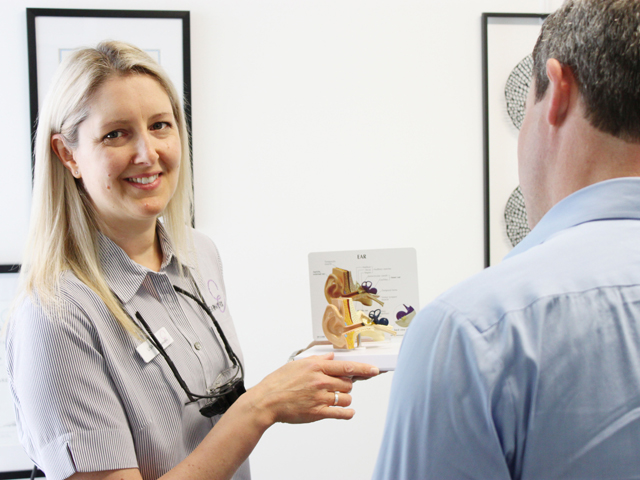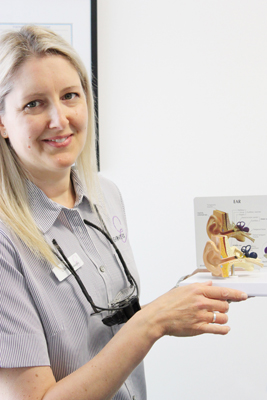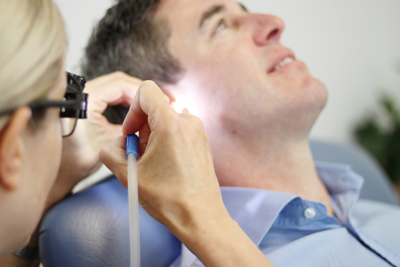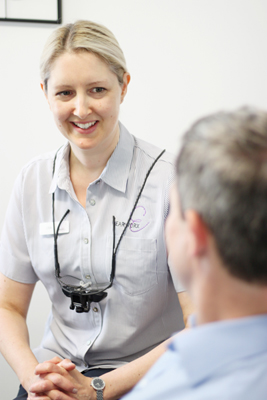Lisa Hellwege Earworx Interview

Expert Shares Top Tips To Clean Your Child's Ears Safely And Effectively
Excessive or impacted earwax occurs in one in ten children, compared to one in twenty adults . Young children are often unable to express symptoms related to this build up e.g. hearing loss, and this makes them particularly vulnerable to a lack of evaluation and treatment. With smaller ear canals and ears, wax build up can cause a blockage more quickly and if not treated can impact on hearing, and therefore development. This can also lead to infection of the outer ear where water becomes trapped behind built up wax. It is therefore extremely important to keep a child's hygiene and ear health top-notch. However, many parents are cautious and wary of what to do when it comes to ear cleaning and ear health.
Registered Nurse and Founder of Earworx, Lisa Hellwege shares effective tips for parents cleaning their child's ears who do not require a treatment or are too young for the procedure.
Use a soft washcloth
Children's ears, like adult's ears, are actually designed to be self-cleaning; they normally do not need to be 'cleaned'. Earwax, produced in the outer third of the ear canal, is carried out by a migrating skin layer which works like a conveyor belt. As the wax is carried out and emerges from the outer ear, it can be gently wiped away using a soft washcloth or tissue. It is important to note that the cloth should only be used on the outside of the ear and no fingers or cotton buds should be inserted into the ear. Using cotton buds or other objects inside the ear canal can push the wax further down the canal, worsening symptoms. A soft washcloth is also a safe method if a child has any residue on the outer ear after an infection.
 Use olive oil
Use olive oil
Olive oil and other commercially prepared earwax softening drops from the chemist, soften and break down excessive earwax that may be causing a blockage. For olive oil use, it is recommended to use four to six drops in each ear whilst the child lies on either side for five minutes. This allows the drops to penetrate the entire wax plug, as opposed to just the bottom of the wax or not at all when just tilting your head. This method will work best if it is completed right before bed. Cotton wool can be used in the outer ear after administration to keep the drops inside the ear for longer. It is important to remember that a cotton bud should never be used to administer the olive oil or clean away the wax; again this may push wax further down the canal.
Dry the ears after a bath, shower or swim
To prevent infections, blockages and keep the ears clean, parents can help their child dry their ears after a bath, shower or swim. This can be done by having the child tilt their ear to one side against a towel to allow the water to drip out on its own. A hairdryer on low heat may also be used for any trapped water within the canal. For any abnormal secretions from the ear, always seek a doctor's opinion.
Earworx, an earwax removal clinic that uses the same safe and effective microsuction technology used by ENT (Ear, Nose and Throat) specialists, focuses on removing excess earwax that may be causing blockages in the ear. When patients don't have any wax to remove they educate people about ear health and ear care. Earworx can see children as young as four years old.
Earworx clinics are located in Sydney, Hobart, Launceston and Ulverstone. The new Bondi Junction clinic is located at 16A Vernon St, Bondi Junction, 2025.
For more information visit www.earworx.com.au.
Interview with Lisa Hellwege, Registered Nurse and Founder of Earworx
Question: What is Earworx?
Lisa Hellwege: Earworx is a dedicated professional earwax removal service. Using dry and effective micro-suction technology under direct observation, wax is gently and safely removed by a qualified nurse.
 Question: What originally inspired you to begin Earworx?
Question: What originally inspired you to begin Earworx? Lisa Hellwege: I used to work in the ENT outpatients clinic at the Royal Hobart Hospital and this is where I first observed the micro-suction procedure which was performed by the Ear Nose and Throat specialists. I remember thinking what a fantastic procedure it was and how much it improved the patient's wax related symptoms. A seed was sowed!
Question: What are the symptoms of excessive or impacted earwax?
Lisa Hellwege: Wax related symptoms include a feeling of blockage, fullness, itching or hearing loss. If wax is very impacted in the ear canal clients may also experience mild pain, ringing and dizziness. Clients often describe to me a feeling of blockage following swimming or bathing (where water becomes trapped behind wax, absorbs into the wax which expands, and subsequently causes a feeling of blockage – this can take days to 'dry out' and clear). A complete occlusion can lead to significant hearing loss. Earwax that is not preventing needed assessment of the ear or causing symptoms however should be left alone.
Question: Why is excessive or impacted earwax so common in young children?
Lisa Hellwege: The specific reasons are not clear, however children's skin is more oily than adults (oil is a component of ear wax, along with sweat, dead skin cells, dust, dirt and hair), and their ear canals are smaller. 1 in 10 children, compared to 1 in 20 adults, experience impacted wax, so they are definitely more prone. It is important to remember that children are often unaware of wax build up and may be unable to express symptoms related to wax build up. If hearing is impacted, this can impact on development. It is important for parents to familiarise themselves with the symptoms of wax build up and to seek advice where necessary.
 Question: How can parents keep a child's hygiene and ear health top-notch?
Question: How can parents keep a child's hygiene and ear health top-notch? Lisa Hellwege: The ears are self-cleaning. Earwax naturally works its own way out of the ear; carried out in a 'conveyor belt' motion by a migrating skin layer which moves out of the ear at about the same rate our fingernails grow. It is ok to wipe wax away as it reaches the outer ear – using a soft cloth or tissue – but do not be tempted by using a cotton bud inside the ear canal! This can push wax further down, worsening symptoms. Keeping the ears dry following swimming/bathing can also help. Wipe the ears dry and use a hair dryer on low heat for any water trapped within the ear canal. However if symptoms persist we recommend assessment by a professional.
Question: What are the dangers associated with impacted earwax?
Lisa Hellwege: For children, the elderly and those with cognitive impairment, the impact can be significant. The risk of ear wax impaction is higher in these populations and there is evidence to suggest this can affect cognitive function. For children, hearing loss can impact on developmental milestones. Water trapped behind built up wax can also lead to ear infection. It is essential for caregivers and parents to understand the symptoms of wax impaction to ensure they can seek advice and treatment where necessary.
Question: Can you share your tips for effectively cleaning a child's ear?
Lisa Hellwege: The main thing to remember is that most of the time, the inside of your child's ear does not actually need cleaning! Wipe wax away as it reaches the outer ear, and don't use a cotton bud (or any other object) inside the ear canal itself; 'nothing smaller than your elbow' – this age-old adage still applies.
Interview by Brooke Hunter
MORE



